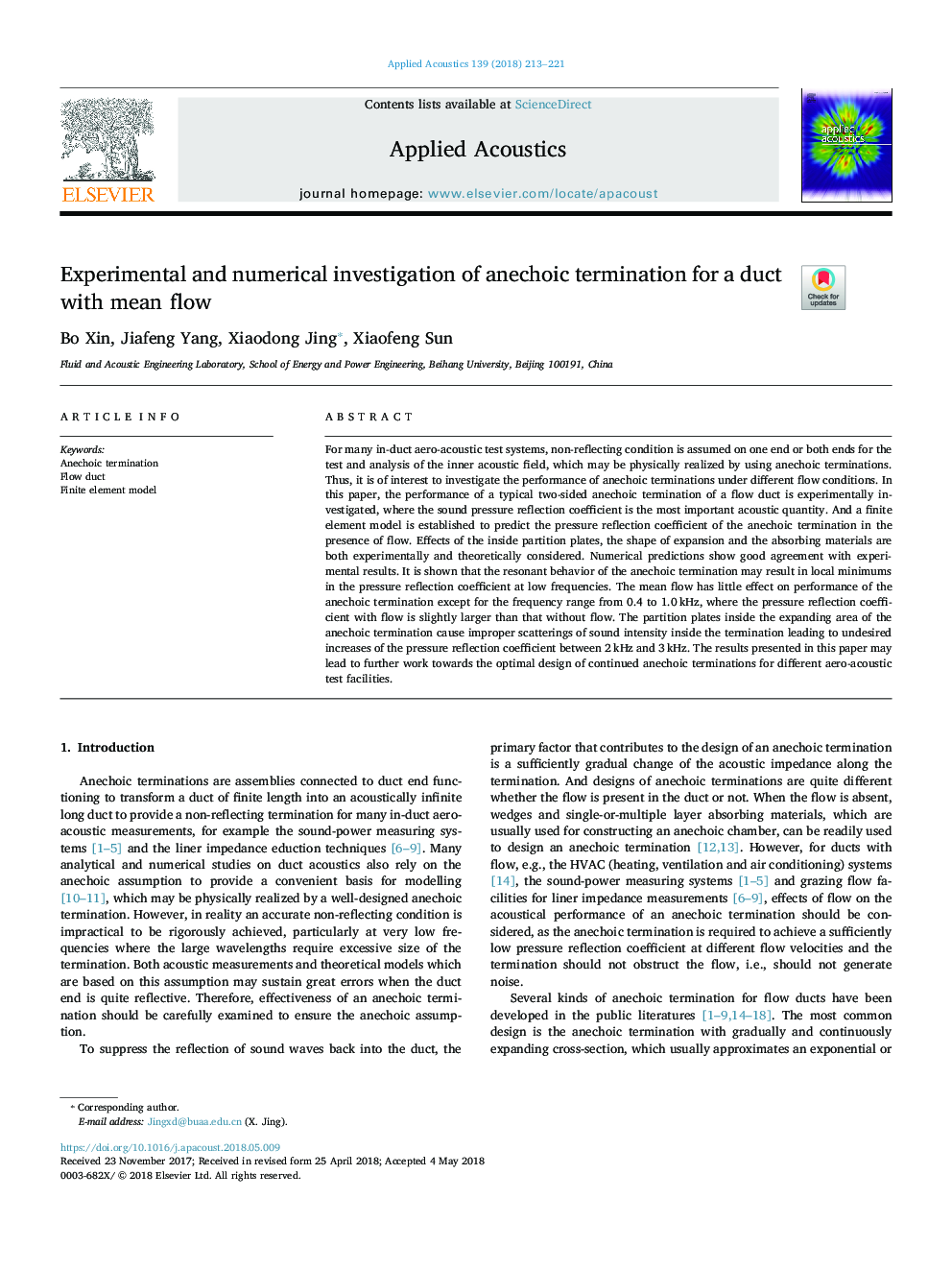| Article ID | Journal | Published Year | Pages | File Type |
|---|---|---|---|---|
| 7152132 | Applied Acoustics | 2018 | 9 Pages |
Abstract
For many in-duct aero-acoustic test systems, non-reflecting condition is assumed on one end or both ends for the test and analysis of the inner acoustic field, which may be physically realized by using anechoic terminations. Thus, it is of interest to investigate the performance of anechoic terminations under different flow conditions. In this paper, the performance of a typical two-sided anechoic termination of a flow duct is experimentally investigated, where the sound pressure reflection coefficient is the most important acoustic quantity. And a finite element model is established to predict the pressure reflection coefficient of the anechoic termination in the presence of flow. Effects of the inside partition plates, the shape of expansion and the absorbing materials are both experimentally and theoretically considered. Numerical predictions show good agreement with experimental results. It is shown that the resonant behavior of the anechoic termination may result in local minimums in the pressure reflection coefficient at low frequencies. The mean flow has little effect on performance of the anechoic termination except for the frequency range from 0.4 to 1.0â¯kHz, where the pressure reflection coefficient with flow is slightly larger than that without flow. The partition plates inside the expanding area of the anechoic termination cause improper scatterings of sound intensity inside the termination leading to undesired increases of the pressure reflection coefficient between 2â¯kHz and 3â¯kHz. The results presented in this paper may lead to further work towards the optimal design of continued anechoic terminations for different aero-acoustic test facilities.
Keywords
Related Topics
Physical Sciences and Engineering
Engineering
Mechanical Engineering
Authors
Bo Xin, Jiafeng Yang, Xiaodong Jing, Xiaofeng Sun,
